How to Fix Folder Keeps Reverting to Read Only on Windows?
When you encounter folders on Windows that continuously revert to a read-only state, you’re experiencing a common issue where folder properties seem immune to user changes. This situation is usually an attribute setting, rather than an error code, which is confusing because the folders are not fully read-only; they just seem so due to attribute settings.

The read-only attribute on folders doesn’t entirely block changes to the folder’s contents; rather, it can restrict the modification of files within the folder depending on certain configurations and software interactions. Often, this issue is due to system or application settings, like Windows Updates or third-party security software such as antivirus programs, which could adjust permissions or attributes without your knowledge.
Besides these usual causes, other system behaviors or settings may also be at play. For example, folders might show as read-only because of system restore settings or certain properties set by applications in charge of file backups or synchronization, such as OneDrive.
Generally, when facing this issue, you can easily handle it by un-checking the read-only attribute box in the properties of the file or folder. But in some cases, this approach isn’t so simple. You may discover that you are unable to change the read-only attribute of the file or folder, which can be quite irritating. To fix this issue, we have come up with solutions that worked for other users.
1. Disable Controlled Access
Turning off Controlled Folder Access can solve the problem, as this feature, part of Windows Defender, protects your files from unauthorized changes by un-trusted applications. It could incorrectly prevent legitimate attempts to adjust folder attributes, including switching off the read-only status.
By deactivating this security feature, you temporarily remove this protective layer, potentially allowing you to successfully changing the folder’s attributes.
- Press the Windows Key + I buttons to open Windows Settings.
- In Settings, go to Update & Security, and then click on Windows Security.
- Under the Virus & threat protection settings, click on Manage settings.
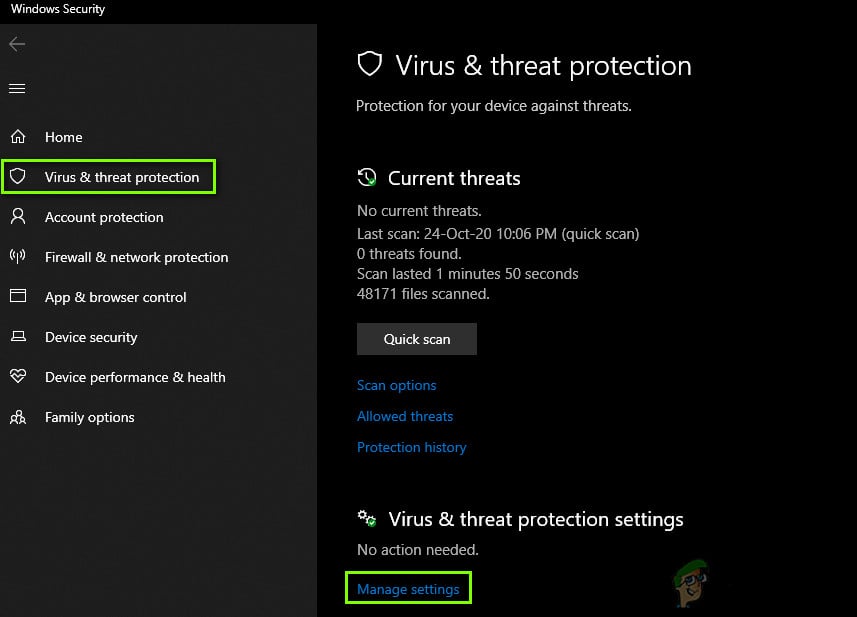
Virus & threat protection settings - In the Controlled folder access section, choose Manage Controlled folder access and switch the toggle to Off.
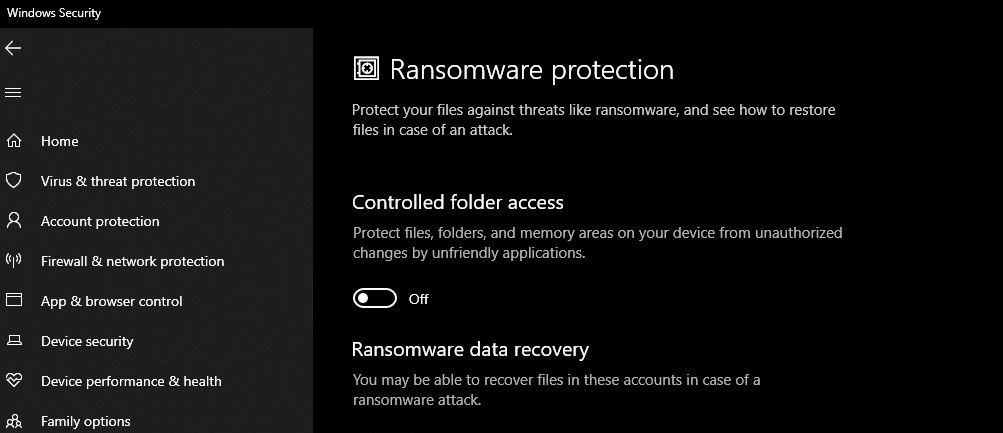
Manage Controlled folder access to Off - Restart your computer completely, and then see if the issue has been solved.
2. Log in as an Administrator
Logging in as an administrator might fix the problem because an administrator account has higher system rights, including the ability to change file attributes and access settings. In comparison, standard user accounts may have limited permissions that prevent modification of specific files and settings.
By making sure you’re logged in as an administrator, you can bypass these limitations and make the required changes to fix the read-only trouble with your files or folders.
3. Change the Attribute of the Folder
Modifying the attribute of a folder can fix read-only issues as it directly changes the folder’s properties that control how the system and users interact with it. The read-only attribute stops changes or deletions, which can be limiting if you want to edit or update the contents.
By using the command prompt to get rid of the read-only attribute, you’re giving yourself (and other users and programs with the proper permissions) the opportunity to edit, erase, or add to the contents of the folder, regaining complete control over it.
- Press Winkey + X and select Command Prompt (Admin) from the options.
- To remove the read-only attribute and assign a new attribute, type in the following command:
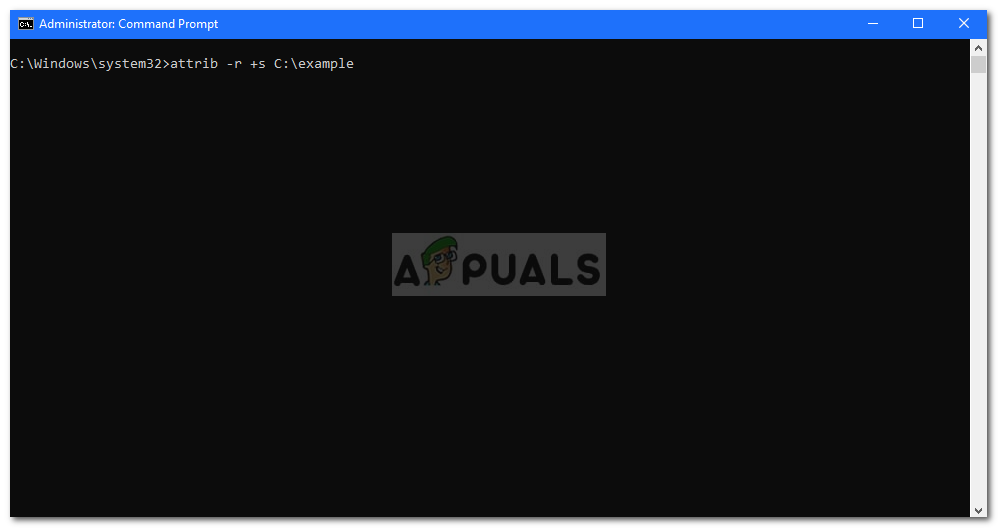
Enter the command to remove the Read-only Attribute
attrib -r +s drive:\<path>\<foldername>
- The command written above takes away the read-only attribute and assigns a system attribute. If certain files or folders don’t function properly with the system attribute, use the following command to get rid of it:
attrib -r -s drive:\<path>\<foldername>
4. Change the Permissions on the Drive
Adjusting the permissions of the drive can solve the problem because it lets you determine who has the power to read, edit, or run the files and folders on that drive. Incorrect permissions may leave you without the necessary access to make changes, including adjusting the read-only attribute.
By granting yourself Full Control permissions, you make sure that your user account holds the maximum level of access, removing any barriers that were stopping you from changing the read-only status of your files and folders.
- Right-click on the relevant drive and choose Properties.
- Go to the Security tab.
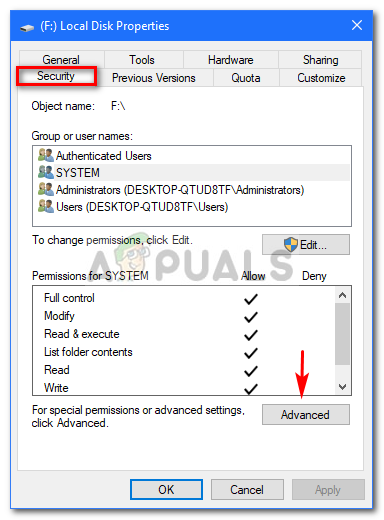
Local Disk Properties (Security) - Click Advanced and then select Change Permissions.
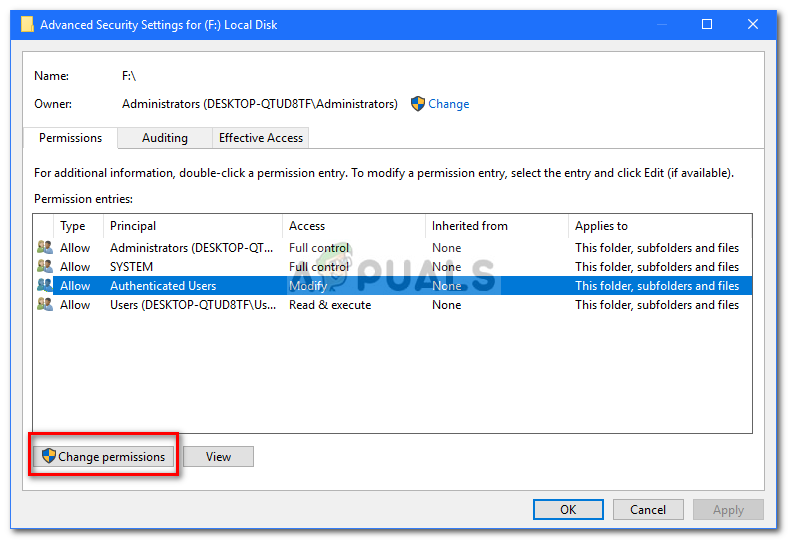
Select change permissions - Highlight your username, then click Edit.
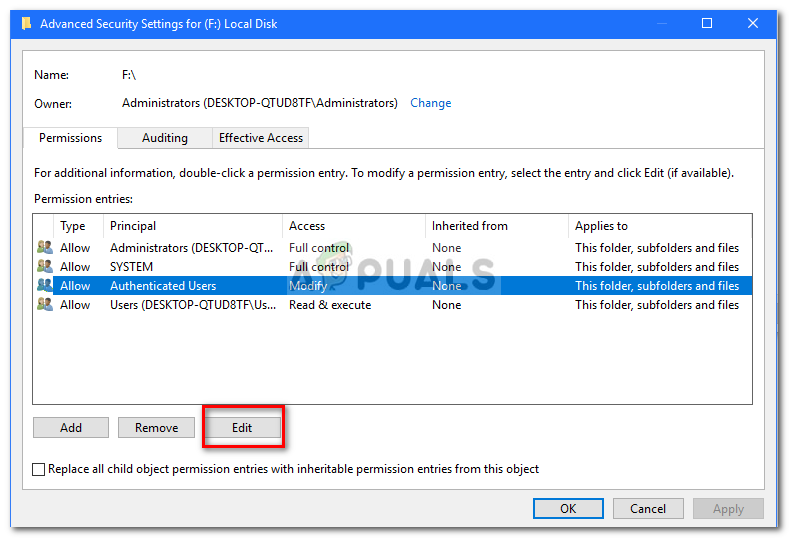
Highlight your user and click Edit - Choose This folder, subfolders, and files in the drop-down menu.
- Tick the Full Control box under Basic Permissions.
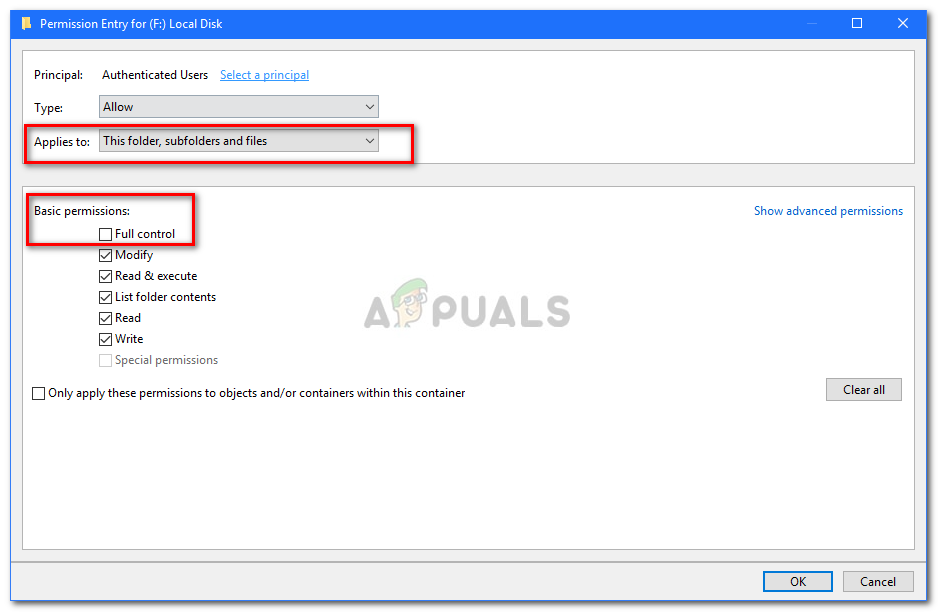
Check the Full Control Box - Hit OK.
If you have more than one account on your computer, you’ll need to allow inheritance first.
- Go to your System drive (where Windows is set up).
- Open the Users folder.
- Right-click on your username and choose Properties.
- In the Security tab, pick Advanced.
- Select Enable Inheritance.
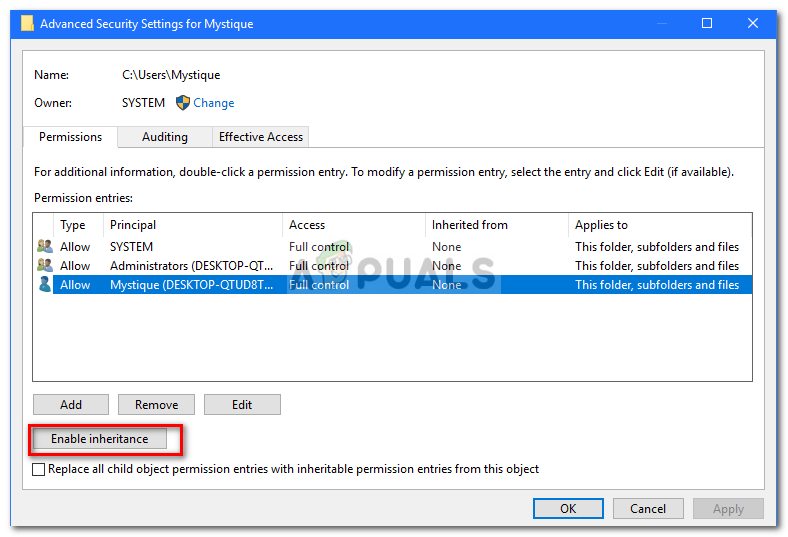
Highlight your user and click Enable Inheritance
5. Disable your Third-party Antivirus
Switching off your third-party antivirus might fix the issue because some antivirus tools can mistakenly tag normal files as potential threats and limit your ability to change those files by setting them to read-only for protection. By temporarily turning off the antivirus, you stop this disruption, letting you modify the read-only attribute. Don’t forget to turn your antivirus back on afterwards to keep your computer safeguarded.





